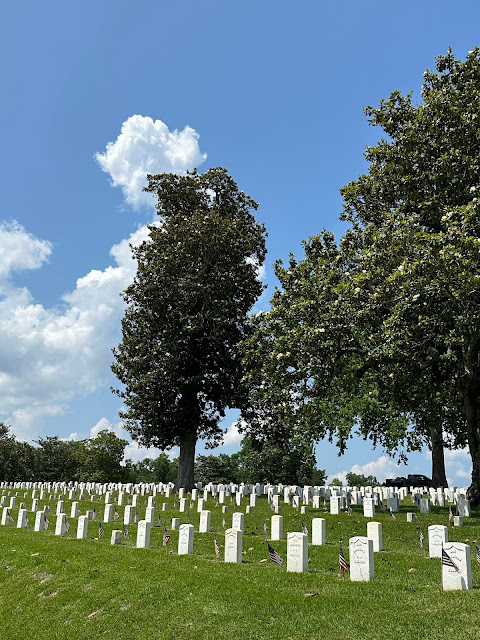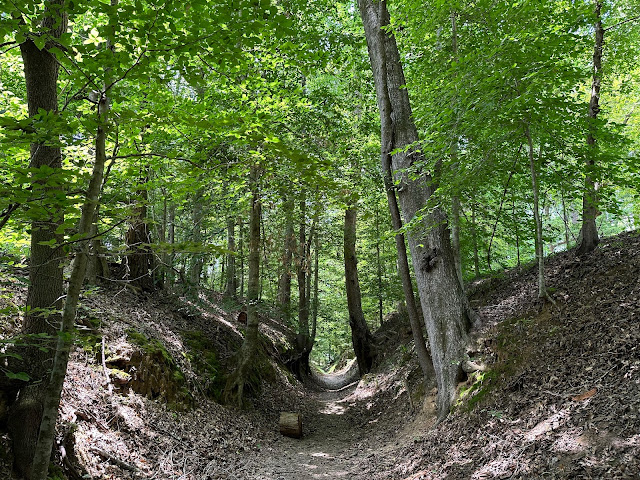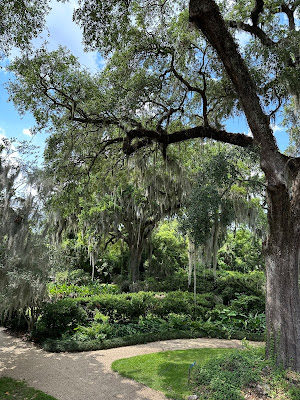We’re in Natchez, MS as I write this, the day after Memorial Day, 2023.
To the members of our armed forces, first responders, and health care providers who have given their all: Thank You!
We visited the Natchez National Cemetery on Memorial Day.
We’re actually in an rv park in Vidalia, Louisiana, on the west bank of the Mississippi River, in a little town of 5,000 people named Vidalia. Not for onions, but for a Spanish governor, Don Jose Vidal, who governed during the brief Spanish ownership of the Louisiana Purchase territory on the 1790’s. France claimed it, Spain seized it, then gave it back to France, who sold it to the United States.
Natchez, Mississippi, on the east bank of the Mississippi River, has a bit different background. The french got it started, gave it to Great Britain, who ceded it to the United States after the Revolutionary War. Interestingly, Spain had control of the area even though Great Britain owned it, so when, in 1797, an american named Major Andrew Endicott set up camp on the highest bluff overlooking Natchez and declared ownership of all Spain’s land north of the 31st parallel, the unhappy spanish headed south. Natchez is protected from high water damage caused by river flooding by a great, large bluff overlooking the river and soon became a center of trade and commerce. Boatmen floated huge barges of goods down the Ohio and Mississippi rivers, and then trekked 450 miles back north via the Natchez Trace.
The Natchez Trace is why we’ve stopped here.
The Trace is a 440 mile long path first used by native people and then expanded and renamed by Thomas Jefferson. Due to its remoteness, harsh conditions, and highwaymen, it was known as “The Devils Backbone” until the development of Memphis and Nashville,TN led to the demise of the Trace and the various inns and trading posts along it. So today, the National Park Service maintains a highway roughly parallel to the Trace, with a southern terminus in Natchez and a northern terminus in Nashville. We have wanted to visit it for years, so from Natchez we drove north a hundred or so miles to Jackson, MS, on the National Park Service highway.
The highway is dotted with points of interest, and so our first stop was at the Emerald Mound, a large 8 acre mound constructed during the Mississippian era. It’s calculated to have had ceremonial and residential buildings on the top.
Our next stop was at the Sunken Trace. At one time the trace was navigable by wagon, but as more and more traffic impacted the road, the surface sank into the soft soil, most of which has been identified as having blown in from the plains.
Back in Natchez, we explored. Natchez was the heart of the slave trade business and maintains a connection to that past. At a location called Forks of the Road, a small but poignant memorial recalls that era.
At this site, where three major roads intersected, and a good distance from plantation owners homes, slaves were brought upriver, groomed, and displayed as property. Reproduction manifests are displayed at the site, but not included here.
Natchez was understandably a location for rich plantation owners to reside, and a competition to build the biggest and best Antebellum home was high on the list of “things to do.” Just driving around town was an experience.
But, not far from the docks, the most unusual plantation home was begun just before the Civil War broke out. Called Longwood, it sits on a hill that most likely had a view of the Mississippi River Valley.
Longwood was to be the most ostentatious home in the area, with over 30,000 square feet of floor area and 32 rooms. And one bathroom.
An octagonal structure with a byzantine dome, it would have been valued at over 25 million dollars today, but sadly, it was never finished. Craftsmen were brought from northern states to build the home, invluding masons who cast over 750,000 red clay bricks onsite. The exterior walls had been completed by the start of the Civil War, and work had been almost completed on the basement, but none of the upper six floors were completed. Windows and doors were installed and the house was made weatherproof, and the workers left.
A unique freestanding staircase leads to the unfinished first floor.
Known as Nutt’s Folly after the owner, only the basement was completed and furnished, complete with a clever “Gout Chair”. It has the same mechanism as a modern Laz-E-Boy chair!
Every dining room had to have a “shoo fly.” The dinnerware is original to the house, with each lid having a porcelain cotton ball on top.
As the war progressed, both Confederate and Union soldiers used the home and grounds as headquarters. The Nutt family sequestered in the basement for the duration of the war while trying to export cotton through Union blockades. Efforts failed, the cotton was burned, and by wars end the family was penniless. Mr. Nutt died in the house, and after the war his widow remarried and being a shrewd businesswoman, she was able to rebuild most of her family’s wealth. Generations of family, along with caretakers, managed the home and plantation lands, originally some 42,000 acres worth, until donating the home and 90 surrounding acres to a Historical Society with the stipulation that the home was to remain as is and intact.
The first floor is open for tours, and gives a unique look into construction in 1861.
It’s hard to tell in this pic, but the corner is not a right angle, but more like 120 degrees. The bricks were cast at that correct angle to avoid difficult corner finishing.
Unopened crates of building materials still remain.
Along with paint pots and doors.
The first floor entry would have been highlighted by the tall rotunda. The circles on the floor are skylights for the basement.
Scaffolding made from priceless straight grain cypress still remain, waiting for workers who will never return.
Natchez-Under-The-Hill is where boats and barges docked, bringing goods and leaving with cotton. It was also the place for a lonely bargeman to spend a little money on spirts and companionship. Down below the bluff, out of sight of more genteel folk, the dirty work got done. Today, restaurants and cruise ships provide entertainment.
Lest we have an opinion about Natchez that focuses on high dollar homes and quiet walks along the bluff; or leave with memories of brick streets and lush forests, we must remember , and indeed cherish the town’s history, because history cannot be erased, only learned from.
Good bye, Natchez.







































































